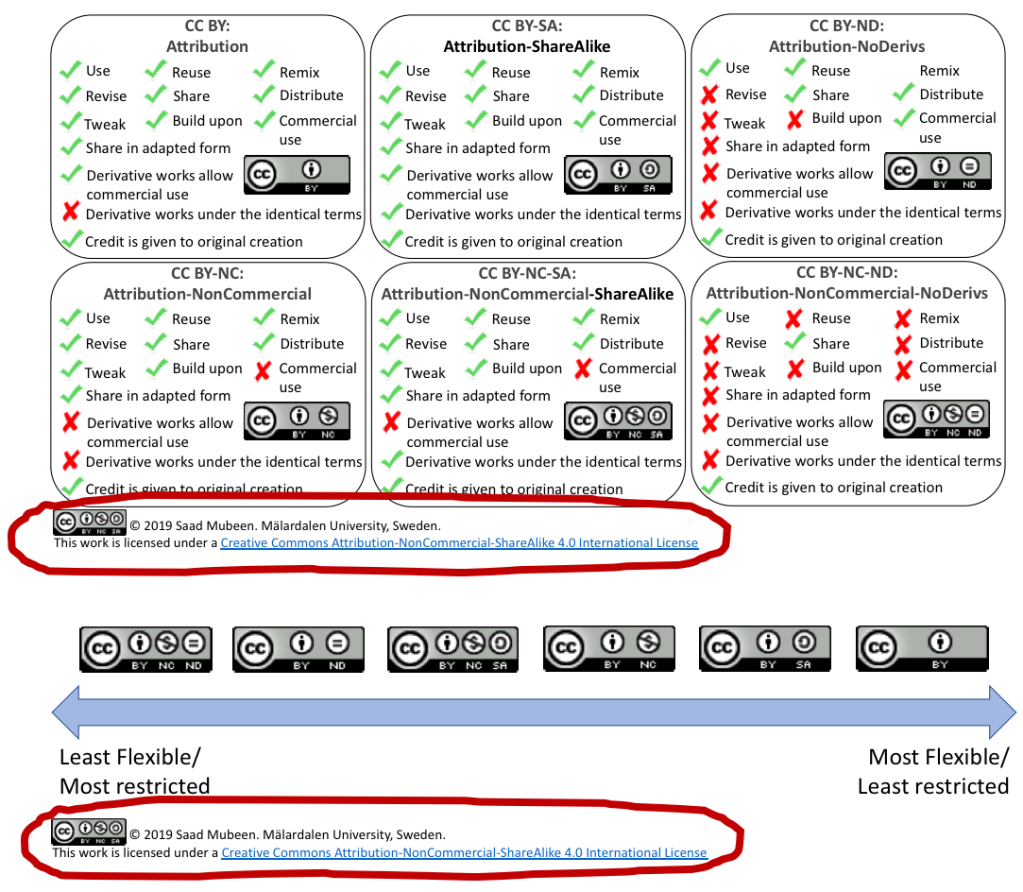One of the key enablers of open learning is the process of sharing and open publishing of educational content by allowing others to reuse, re-distribute, revise, remix and retain the contents [1]. The Creative Commons (CC) license [2] facilitates such sharing and open publishing while ensuring the original developer/author of the content is properly acknowledged. Basically, the Creative Commons license allows open sharing and distribution of licensed material with proper credits to the licensor (owner), while taking exceptions and limitations into account. The following quote by I. Bates in the book “Teaching in a Digital Age: Guidelines for Teaching and Learning” sums up the importance of the Creative Commons paradigm:
“This seemingly simple idea, of an ‘author’ creating a license enabling people to freely access and adapt copyright material, without charge or special permission, is one of the great ideas of the 21st century” [3].
Another aspect of the Creative Commons license is the protection of licensor of any liability of damages that might occur by using the licensed material. However, it is important to note that the Creative Commons organisation does not provide any legal assistance, warranties or liability for damages.
There are six different Common Creative licenses. These licenses together with various supported attributes are shown in Figure 1.
 Figure 1: Six different Creative Common licenses with flexibilities and restrictions. The figure is developed based on the author’ interpretation of the Creative Commons license [2].
Figure 1: Six different Creative Common licenses with flexibilities and restrictions. The figure is developed based on the author’ interpretation of the Creative Commons license [2].
Note that all of these licenses mandate the user to properly credit the creator of the original content. The CC BY license is the most flexible license as it allows one to use the original content for both commercial and non-commercial purposes. Moreover, it allows the user of the content to reuse, remix, revise, share, tweak, distribute the original and derivative contents. On the other hand, the CC BY-ND-NC is the least flexible one among these licenses as it allows the user to only use and share the original content for non-commercial purposes. Figure 2. depicts the spectrum of the Creative Commons licenses with respect to flexibilities and restrictions.
 Figure 2: Spectrum of flexibilities and restrictions in the Creative Common Licenses.
Figure 2: Spectrum of flexibilities and restrictions in the Creative Common Licenses.
It is also interesting to note that it is fairly easy to find which Creative Common license suits to one’s material using the user-friendly feature selection process provided by the Creative Commons. For instance, the license terms and logo at the bottom of Figure 1 and Figure 2 are generated using the Creative Commons license selection feature. The corresponding texts and logos are highlighted in Figure 3.
 Figure 3: Creative Common license terms generated using the Creative Commons license selection feature.
Figure 3: Creative Common license terms generated using the Creative Commons license selection feature.
References:
[1] Hilton III J., Wiley D., Stein J., and Johnson A.
2010. The four ’R’s of openness and ALMS analysis: frameworks for open
educational resources. Open Learning: The Journal of Open, Distance and
e-Learning 25, 1 (2010), 37–44. https://doi.org/10.1080/02680510903482132
[2] Creative Commons webpage: https://creativecommons.org/licenses/?lang=en
[3] Bates, T. (2019). Teaching in a Digital Age:
Guidelines for Teaching and Learning. (2nd edition), Chapter 11.